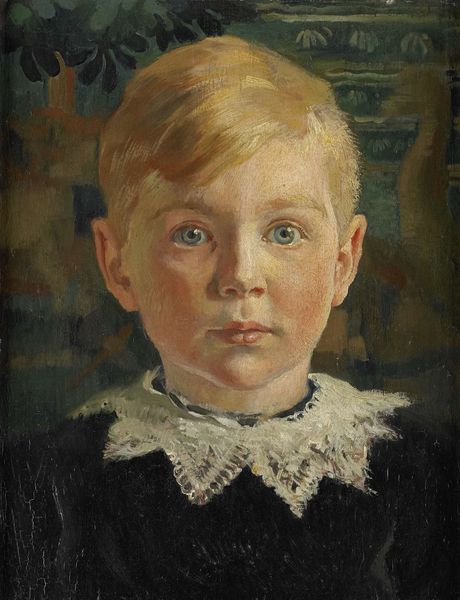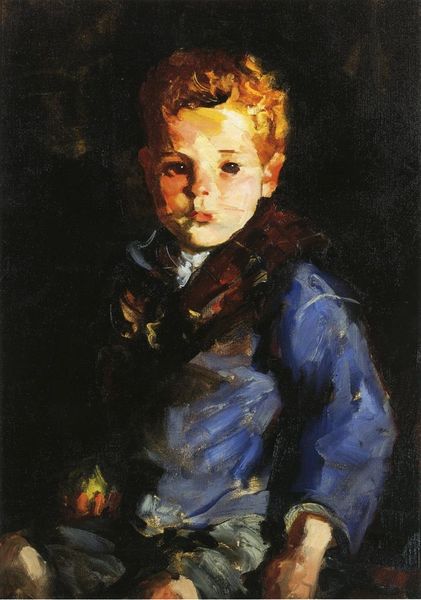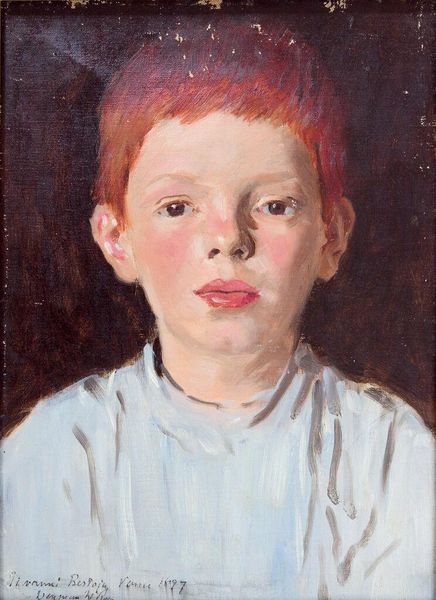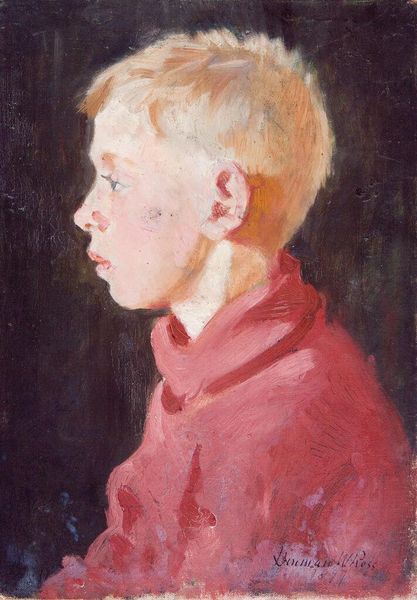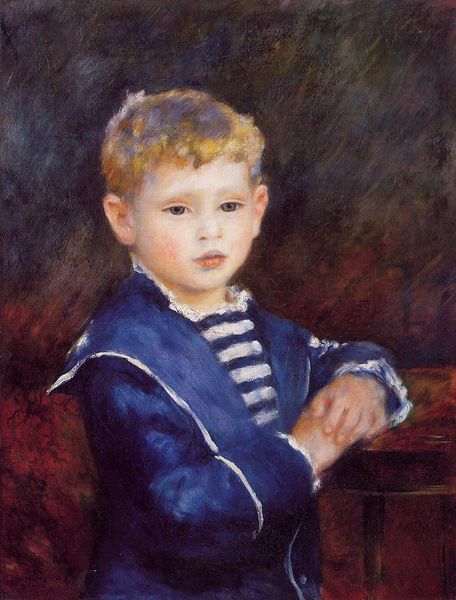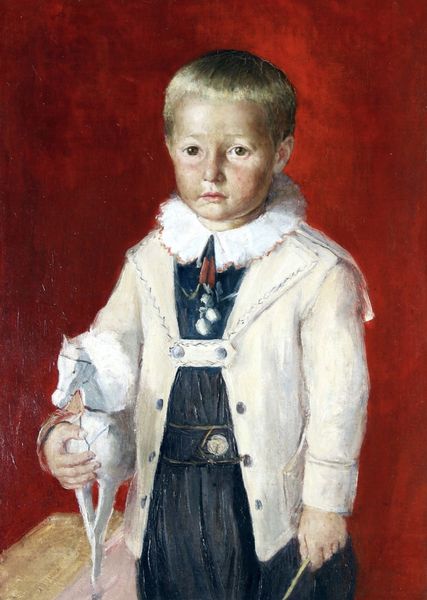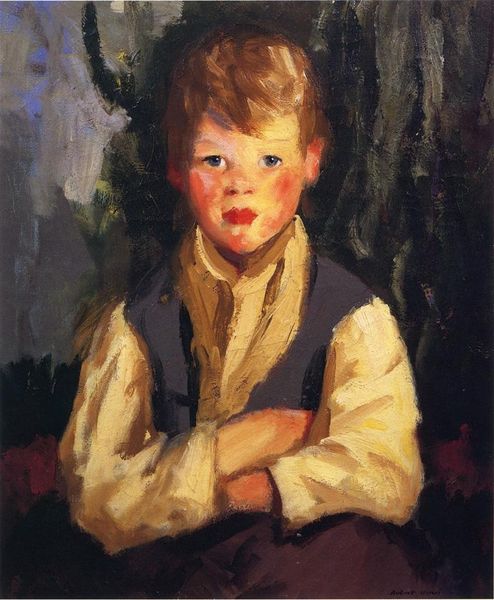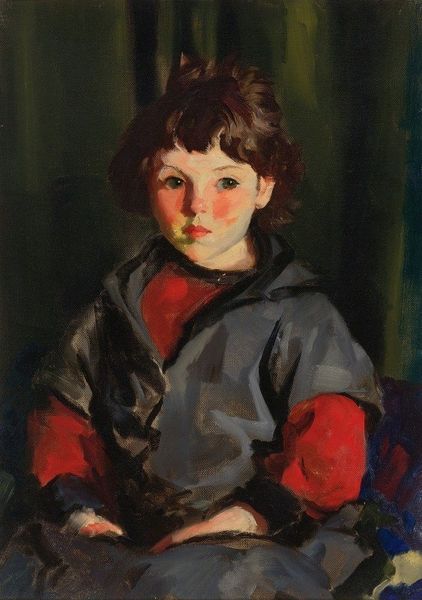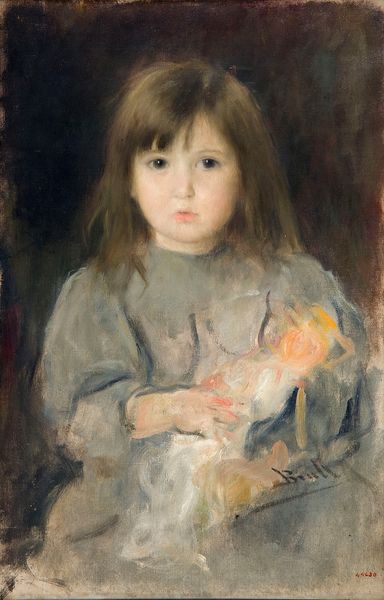
Copyright: Public domain
Albrecht Anker painted this portrait of his daughter in Switzerland, sometime in the late 19th century, with oil on canvas. At first glance, it's a simple, intimate portrait of a child and her toy. But consider the context: Anker was one of Switzerland's most popular genre painters, known for his depictions of rural life and, especially, children. In the rapidly industrializing Europe, the image of a child became a powerful symbol of innocence, simplicity, and traditional values. Anker himself was involved in politics and his paintings often promoted a conservative, idealized vision of Swiss society. What does it mean, then, to present his own daughter in this way, holding a toy soldier? Does it critique the growing militarization of society, or does it reinforce traditional gender roles? To understand this fully, we need to examine the social and cultural history of childhood, toys, and patriotism in 19th-century Switzerland, using sources like letters, diaries, and even toy catalogs. The meaning of art is always rooted in its specific time and place.
Comments
No comments
Be the first to comment and join the conversation on the ultimate creative platform.
